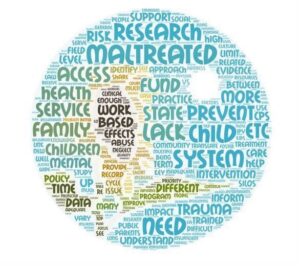About TRANSFORM

The TRANSFORM Research Center is a nationally recognized Center of Excellence, funded by the National Institutes of Health. Our mission is to change the paradigm of child maltreatment prevention from reactive to proactive through research and dissemination. Our core areas include three ground-breaking studies and an expansive research dissemination program. To fulfill its mission, TRANSFORM:
- Provides infrastructure and access resources to support a multidisciplinary team of translational scientists spanning the fields of developmental psychopathology, intervention science, neuroscience, genetics, and law.
- Evaluates interventions to foster adaptive parenting and infant outcomes that can be exported to real-world community settings.
- Considers law as an agent of change in children’s lives by helping legal, child welfare, and medical professionals understand and use this important area of science.
- Partners with leaders of various community systems-of-care serving high-risk youth to implement evidence-based approaches in high-impact public health settings: courts, medical/mental health offices, child welfare offices, social services, etc.
- Interfaces with various stakeholder groups across multiple child-serving systems (child welfare, law, education, physical and mental health, law enforcement, advocacy groups, funders and policymakers) to disseminate the products of TRANSFORM research.
- Provides education, mentoring and training, pilot-funding opportunities, and career development coaching for early career professionals to transmit cutting-edge research and the skills required to translate these findings into effective new therapies and procedures.
- Disseminates research findings via traditional routes (e.g., publications and presentations at professional conferences) and with additional initiatives (e.g., this website, TRANSFORM-sponsored webinars, podcasts, presence at conferences, social media, and mobile applications).
THEORETICAL MODEL
TRANSFORM operates under the overarching theoretical and methodological perspective of developmental psychopathology. This perspective integrates Bronfenbrenner’s (1979) ecological approach to understanding environmental contexts, organizational perspectives on development (Cicchetti & Toth, 2015; Cicchetti & Valentino, 2006), Belsky’s (1980) nested, interactive systems of influence on parenting, and Cicchetti and Rizley’s (1981) model of transactions among risk and protective factors. Equifinality and multifinality in developmental processes are seen as central for understanding normative and atypical development. From its inception, the developmental psychopathology framework has proffered the mutually- informative transactions that can occur between basic and applied research, with the ultimate goal of informing the provision of prevention and intervention initiatives. Within this framework, preventive interventions can provide important information on developmental processes in order to examine those factors that are modifiable with treatment. Thus, basic, as well as applied research can shape our understanding of etiological factors, change mechanisms, and sequelae of child maltreatment.
A multi-level analytical approach incorporates multiple influences, including psychosocial as well as neurobiological processes that impact development. Increasingly, the role of the stress response system through the hypothalamic-pituitary-adrenal (HPA) axis, as well as genetic and epigenetic factors, are being examined in high-risk populations to better understand its developmental impact and the opportunity it provides to assess treatment effects. Dysregulations in HPA axis activity and gene by environment interactions have been documented by our researchers in a multitude of publications on maltreated children. Although advances in science and technology have permitted more detailed examination of processes impacting the development of maltreated children, they also have uncovered variability and transactional challenges for which simplistic solutions have proven inadequate.
